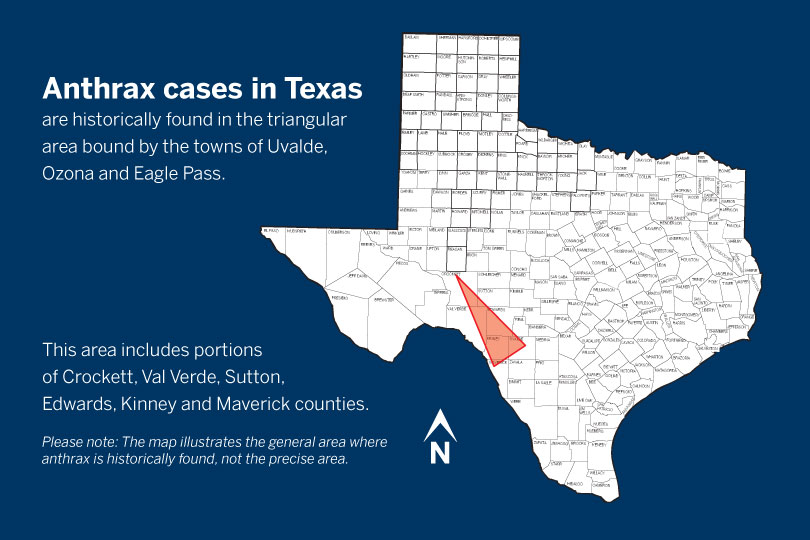Texas Animal Health Commission (TAHC) officials received confirmation of anthrax in one cow on a Briscoe County premises on Aug. 2. This is the first anthrax case in Texas this year.
The premises is located in the northwest portion of the county and has been quarantined. TAHC rules require proper disposal of affected carcasses and vaccination of other cattle on the premises prior to release of the quarantine.
“TAHC will continue to closely monitor the situation,” Dr. Susan Rollo, TAHC state epidemiologist, said. “Producers are encouraged to remain vigilant and consult with their local veterinary practitioner if they suspect their animals are exposed to anthrax or are interested in vaccinating their livestock.”
Anthrax is a bacterial disease caused by Bacillus anthracis, which is a naturally occurring organism with worldwide distribution, including certain parts of Texas.
Anthrax cases in Texas are most often found in portions of Crockett, Val Verde, Sutton, Edwards, Kinney and Maverick counties.
An effective vaccine for livestock is available and is commonly used in areas that have anthrax. To be effective, it must be used before the animal is exposed to the bacteria.
It is common to see an increase in anthrax cases after periods of wet, cool weather, followed by hot, dry conditions. During these conditions, animals ingest the anthrax bacteria when they consume contaminated grass and hay or inhale the spores. Outbreaks usually end when cooler weather arrives.
After exposure to anthrax, it usually takes three to seven days for animals to show symptoms of anthrax. Once symptoms begin, death will usually occur within 48 hours. Acute fever followed by rapid death with bleeding from body openings are all common signs of anthrax in livestock. Owners of livestock and animals displaying symptoms consistent with anthrax or experiencing death of animals should contact a private veterinary practitioner or a TAHC official.
Livestock owners are encouraged to follow basic sanitation precautions when handling affected livestock or carcasses. It is recommended to wear protective gloves, long sleeve shirts and to wash thoroughly afterward to prevent accidental spread of the bacteria to people. Click here for more information on how anthrax affects humans.
Click here for more information about anthrax, contact your local TAHC region office or visit http://www.tahc.texas.gov.

